Simple version
You can define your own Stat (inherited from StatSummary in my example below, since that's what you used in the question, though you can also inherit from other stats if they suit your needs better), with a modified version of the compute_layer() function that makes use of your own function for handling NA values, instead of the original remove_missing() function.
Replacement function for remove_missing:
replace_missing <- function(x) {
x[is.na(x)] <- 999
x
}
Define own Stat based on StatSummary (note: all non-exported functions used in the original compute_layer have been prefaced with <relevant package namespace>:::, so that the new version can still use them):
StatNew <- ggproto("StatNew", StatSummary,
compute_layer = function(self, data, params, layout) {
ggplot2:::check_required_aesthetics(
self$required_aes,
c(names(data), names(params)),
ggplot2:::snake_class(self)
)
required_aes <- intersect(
names(data),
unlist(strsplit(self$required_aes, "|", fixed = TRUE))
)
data <- replace_missing(data) # instead of remove_missing()
params <- params[intersect(names(params), self$parameters())]
args <- c(list(data = quote(data), scales = quote(scales)), params)
ggplot2:::dapply(data, "PANEL", function(data) {
scales <- layout$get_scales(data$PANEL[1])
rlang:::try_fetch(
rlang:::inject(self$compute_panel(data = data, scales = scales, !!!params)),
error = function(cnd) {
cli::cli_warn("Computation failed in {.fn {ggplot2:::snake_class(self)}}", parent = cnd)
data_frame0()
}
)
})
})
Define own stat_* function to call on new Stat:
stat_new <- function(mapping = NULL, data = NULL, geom = "pointrange", position = "identity",
..., fun.data = NULL, fun = NULL, fun.max = NULL, fun.min = NULL,
fun.args = list(), na.rm = FALSE, orientation = NA, show.legend = NA,
inherit.aes = TRUE) {
layer(data = data, mapping = mapping, stat = StatNew,
geom = geom, position = position, show.legend = show.legend,
inherit.aes = inherit.aes,
params = rlang:::list2(fun.data = fun.data, fun = fun, fun.max = fun.max, fun.min = fun.min,
fun.args = fun.args, na.rm = na.rm, orientation = orientation,
...))
}
Usage:
p3 <- ggplot(data = mydata, aes(x= x_mydata, y= y_mydata)) +
stat_new(fun = mean, geom="bar")
p3

More flexible version
Suppose you want the flexibility of controlling the replacement value within stat_*(), rather than having it hardcoded as 999 for all eternity, the following changes should suffice:
Add parameter in replacement function to take on different replacement values:
replace_missing <- function(x, na.replace = 999) {
x[is.na(x)] <- na.replace
x
}
Add na.replace as one of the extra parameters expected by your Stat:
StatNew <- ggproto("StatNew", StatSummary,
# original ones expected by StatSummary are only na.rm & orientation
extra_params = c("na.rm", "orientation", "na.replace"),
compute_layer = function(self, data, params, layout) {
ggplot2:::check_required_aesthetics(
self$required_aes,
c(names(data), names(params)),
ggplot2:::snake_class(self)
)
required_aes <- intersect(
names(data),
unlist(strsplit(self$required_aes, "|", fixed = TRUE))
)
data <- replace_missing(data, params$na.replace) # note na.replace parameter's usage here
params <- params[intersect(names(params), self$parameters())]
args <- c(list(data = quote(data), scales = quote(scales)), params)
ggplot2:::dapply(data, "PANEL", function(data) {
scales <- layout$get_scales(data$PANEL[1])
rlang:::try_fetch(
rlang:::inject(self$compute_panel(data = data, scales = scales, !!!params)),
error = function(cnd) {
cli::cli_warn("Computation failed in {.fn {ggplot2:::snake_class(self)}}", parent = cnd)
data_frame0()
}
)
})
})
Include na.replace as a parameter for stat_* function:
stat_new <- function(mapping = NULL, data = NULL, geom = "pointrange", position = "identity",
..., fun.data = NULL, fun = NULL, fun.max = NULL, fun.min = NULL,
fun.args = list(), na.rm = FALSE, orientation = NA, show.legend = NA,
inherit.aes = TRUE, na.replace = 999) { # set default value as 999
layer(data = data, mapping = mapping, stat = StatNew,
geom = geom, position = position, show.legend = show.legend,
inherit.aes = inherit.aes,
params = rlang:::list2(fun.data = fun.data, fun = fun, fun.max = fun.max, fun.min = fun.min,
fun.args = fun.args, na.rm = na.rm, orientation = orientation,
na.replace = na.replace, # must include here too
...))
}
Usage:
p4 <- ggplot(data = mydata, aes(x= x_mydata, y= y_mydata)) +
stat_new(fun = mean, geom="bar")
p4 # no difference from before, as default replacement value of 999 is used
p5 <- ggplot(data = mydata, aes(x= x_mydata, y= y_mydata)) +
stat_new(fun = mean, geom="bar", na.replace = 50)
p5 # different from p3/p4


